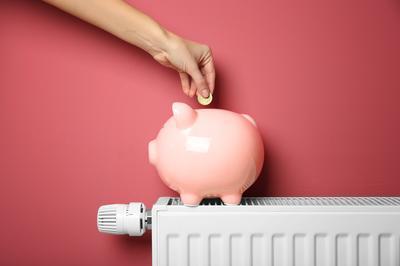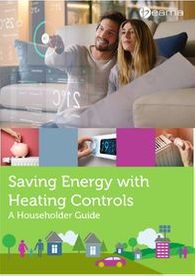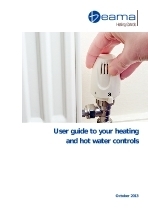Homeowner FAQs

How can I use my heating controls to save energy while staying warm?
The BEAMA Heating Controls group has put together a specific website to provide tips and guidance on using heating controls. This can be found at www.controlyourhome.org.uk.
Why does my home heating system need temperature controls?
Your central heating system will have been designed to make sure that it provides enough heat on the coldest likely winter day. So for most of the time it will be providing far more heat than you actually need. Temperature controls allow your heating system to work effectively enough to heat your house quickly, but only to make your home as warm as you like it – whatever the weather outside.
Why do I need controls when I can just turn my boiler on and off when I need to warm the house?
Obviously using your heating for only the odd hour here or there is one way of managing your bills, but that doesn’t mean it’s an efficient way to use your heating. For one thing, a system with no controls is likely to overheat your bedrooms before the living room is suitably warm, meaning that you are using far more energy than you need if you only want to be warm in one room. For another, tests show that boilers are at their least efficient in the first hour or so of operation, so it can be much more beneficial for the heating to be on for a longer period when it will use much less energy to maintain comfort temperatures as long as there are suitable controls – allowing you to get much more warmth for your money.
Should I turn my room thermostat up when the weather gets colder?
The simple answer is no. A room thermostat sets the temperature that you want the room to be and will automatically make sure that there is more heat from the system to do this when it is colder outside.
Of course there may be times when you want different temperatures in your home and you can change the thermostat accordingly, but remember that this setting will be maintained regardless of the temperature outside.
Would it be more cost efficient to leave the heating on low constantly rather than turning it on and off?
There is a theory that it is better to reduce the temperature setting, rather than to turn your heating completely off, during periods when you’re not in or in bed. This is based on the fact that your heating has to warm the structure of the building as well as increase the temperature of the air and this takes more energy to do each time the heating comes on.
In practice most homes will use less energy by turning the heating off when it’s not needed but this can vary depending on the type of building. You consider fitting a ‘programmable room thermostat’ that can reduce temperatures when desired as it is certainly not economical to keep your heating on at full temperature for 24 hours a day!
To answer this question we did some tests at the Salford University Energy House comparing a house with the heating turned off during non-heated periods, with the same house with the set-point temperature at 16oC during the non-heated periods. There was a 3% increase in running cost to keep the set-point temperature at 16oC.
Can I control room temperatures just by turning down the manual radiator valves?
Turning down manual radiator valves will restrict the amount of hot water entering a radiator to a fixed level. This means that the radiator will be very slow to get up to temperature and will produce a fixed heat output, even though the heat needed in the room will vary according to outside temperature. A thermostatic radiator valve (TRV) will adjust the heat output of the radiator to maintain a comfortable room temperature. It will automatically open the valve so that the room reaches the desired temperature quickly, and then reduce the hot water into the radiator to maintain that temperature. It will even turn the radiator off if the amount of sunshine coming into a room meant that no other heating was needed.
What controls do I need for my hot water?
Your heating boiler will usually provide hot water as well, which is why it is by far the biggest energy using appliance in the home. If it is a ‘combi’ boiler and provides instantaneous hot water then no additional controls are needed. If you have a separate hot water cylinder then there should be a thermostat on the cylinder to turn the boiler off when the water is hot enough. Also, there should be some form of time control for the hot water. Often this will be a separate hot water programme on your heating programmer and recently installed systems will have a completely independent hot water programmer.
Why do I need room temperature controls when my boiler has its own thermostat?
A heating boiler will usually have a temperature dial on it which is known as the boiler thermostat. This sets the maximum temperature of the water that comes from the boiler into the radiators and will usually be set by the installer or service engineer. Ideally you want the radiators to get hot quickly so the house warms up quickly, and then to have room temperature controls that will make sure that the system is running efficiently.
The important difference is that a room thermostat and thermostatic radiator valves both adjust the amount of heat coming from the system in relation to the desired temperature of the room – ensuring that you get both comfort and efficiency.
A boiler thermostat (and manual radiator valves for that matter) will only adjust the amount of heat coming from the system and this will either be too much or too little depending on the temperature outside. It’s a bit like the fact that a stopped clock will always be right twice a day!
I’ve heard about ‘smart controls’ for my heating – what advantages do they offer?
There are a now a variety of products available that are often described as a ‘smart control’ and usually this definition means that there is some clever way of changing the settings on your heating system so that the times of operation, and in some case the temperature setting, can fit more closely to your lifestyle. For example it may allow you to turn your heating off from your mobile phone if you find you will be coming home later than expected.
What’s important is that you have a control system that you are happy to use as there are always additional savings possible through the way that you use the heating system controls.
How do temperature controls improve the efficiency of the central heating boiler?
Boilers operate more efficiently when the return temperature (the water coming back into the boiler from the radiators) is lower. Modern condensing boilers need the return temperature to be below 55°C to operate in their efficient ‘condensing’ mode. The tests at Salford University showed that a boiler in a house with individual room temperature controls would be in condensing mode for over 80% of the time it was operating, while the same boiler without controls would be in condensing mode for as little as 5% of its operation.
Downloads
-

Consumer guide - Saving Energy with Heating Controls
27 November 2020
-
-
-
-

User Guide to Heating Controls
11 July 2016
-
Zero rate VAT on heating controls - 2022 update
22 July 2022





